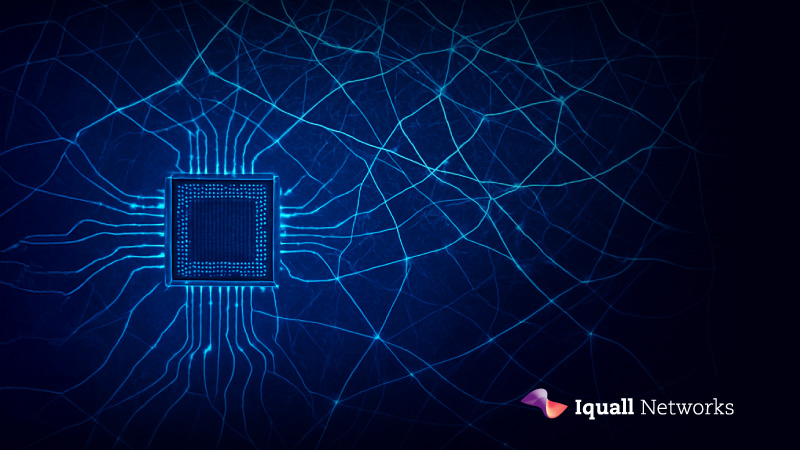
Why write a book, and why now?
When I began preparing this guide, my initial goal was very concrete: aligning a unified vision of autonomous networks within my own organization. Every month brought new developments—emerging AI capabilities, changing standards, launching pilots—and we needed a common framework to move forward without getting lost in the chaos.
Midway through, I realized something fundamental: this same need for clarity and structure is shared today by dozens of CTOs and decision-makers at major telecom companies. They have “autonomy” on their strategic agendas, understand the potential, and feel the urgency—but struggle with translating that vision into technical actions without losing sight of their business goals.
Today, CTOs and their teams face a huge challenge: creating new business models while maximizing resource efficiency, being disruptive and innovative yet ensuring network stability, security, and resilience. They need to transform their organizational culture to become agile and embrace a mindset capable of overcoming challenges and seizing opportunities—without forgetting they are telecom companies, not software companies.
AI-Driven Autonomous Networks: A Strategic and Technical Guide emerges from that dual motivation: first, as an internal manual to align teams; second, as a bridge between executive vision and technical execution, offering telecom leaders a pragmatic roadmap for designing, deploying, and scaling intelligent networks without becoming overwhelmed by complexity. It does not aim to present an absolute truth, but rather to synthesize my team’s vision and open it to public discussion, enriching us as an industry.
Structure and Key Concepts
AI-Driven Autonomous Networks is organized into 10 chapters that progressively cover the journey toward network autonomy:
- Justification and context: Why today’s networks must evolve.
- Defining autonomy: Differences between automation and true autonomy, including TM Forum maturity levels.
- Essential pillars: Observability, analytics/AI, intent-based policies, and orchestration.
- Network domains: RAN, transport, mobile core, and fixed access, with specific use cases.
- Automation stack: Technical layers and DevOps practices for software-based management.
- AI and agents: How intelligent models and microservices drive control loops.
Operational models: New roles, policy-as-code governance, and continuous change. - Measurement and governance: Specialized KPIs and control frameworks.
- Future vision: Networks as living systems, human-machine collaboration, and open ecosystems.
This summary provides clarity on what to expect from each section before diving into the details.
1. Why discuss autonomy now?
Today’s networks face a “perfect storm”: 5G, edge computing, IoT, and virtualization converge to dramatically increase operational complexity. Simultaneously, pressure to reduce costs and accelerate time-to-market keeps growing. Specialized talent is becoming scarcer, and dependence on “tribal knowledge” no longer scales, making traditional operation centers obsolete.
2. Definition and levels of autonomy
Lambert clearly distinguishes between automation (predefined tasks, fixed rules) and autonomy (the capability to sense, decide, act, and learn). He proposes a continuum ranging from assisted operations to full autonomy, passing through partial automation and closed loops. He adopts the TM Forum maturity model, structured into six levels from Level 0 (manual) to Level 5 (full autonomy), enabling structured progress evaluation.
3. The four pillars of autonomy
An autonomous network must master four essential capabilities:
- Sensing (Observability): Real-time telemetry and topology data.
- Understanding (Analytics/AI): Anomaly detection, correlation, and forecasting.
- Decision-Making (Policy/Intent): Translating business objectives into executable rules.
- Action (Orchestration): Automatic execution of changes via controllers and agents.
4. Essential standards and frameworks
TM Forum leads with its Autonomous Networks Framework and Open Digital Architecture, defining autonomy levels, architectural principles, and a widely adopted Open API catalog. Complementing this are standards from IETF (YANG, NETCONF/RESTCONF), MEF (LSO), and ETSI ZSM, ensuring interoperability and scalability across multi-vendor ecosystems.
5. Autonomy by domain
Lambert recommends progressing domain by domain before attempting end-to-end orchestration:
- RAN: Dynamic parameter tuning (tilt, power) and AI-enhanced SON.
- Transport/IP Core: SLA-based routing, bottleneck detection, and proactive rerouting.
- Mobile Core: Automatic scaling of 5G SA functions and management of network slices.
- Fixed Access: Zero-touch provisioning, CPE auto-healing, and proactive user experience.
6. The automation stack
The automation stack is structured into five layers:
- Telemetry and Observability
- Analytics and AI
- Policy and Decision Logic
- Orchestration and Execution
- Intent and Experience Interface
Applying DevOps practices—versioning, testing, CI/CD—transforms each loop into robust, manageable software components.
7. The role of AI and agents
AI enhances predictive detection, root-cause analysis, and policy adaptation. Agents act as autonomous microservices, learning from their outcomes and continuously optimizing parameters in specific domains (RAN, transport, core), eventually collaborating within multi-agent systems that negotiate and coordinate actions.
8. Operational models and governance
True transformation requires shifting from task execution to intent governance. New roles emerge: intent designers, loop curators, and outcome owners. Governance is implemented as policy-as-code within CI/CD pipelines, ensuring secure, auditable, and business-aligned changes.
9. Measurement and sustainability
Without clear metrics, autonomy remains theoretical. Lambert proposes specific KPIs: loop execution rate, frequency of human intervention, percentage of intent compliance, MTTR (automated vs. manual), policy drift alerts, and model confidence deviations. These indicators enable strategy refinement and demonstrate tangible value.
10. Future vision
The author envisions networks as living systems woven together by an “intelligence fabric,” where distributed agents collaborate and humans define strategic objectives. He advocates for open and ethical ecosystems built upon standards and co-innovation among operators, vendors, and standardization bodies.
Conclusion and Next Steps
AI-Driven Autonomous Networks is far more than a technical compendium—it’s a manifesto for redefining network operations in the AI era. If you’re a CTO, architect, or telecom leader, you’ll find here not just concepts but a detailed roadmap to start building your autonomous network, brick by brick, and leading the change.
What will your first autonomy brick be? Share your experiences in the comments and spread this post on LinkedIn to keep the conversation moving forward!
By Matías Lambert, CEO & Co-Founder at Iquall Networks
https://www.linkedin.com/in/matiaslambert/



